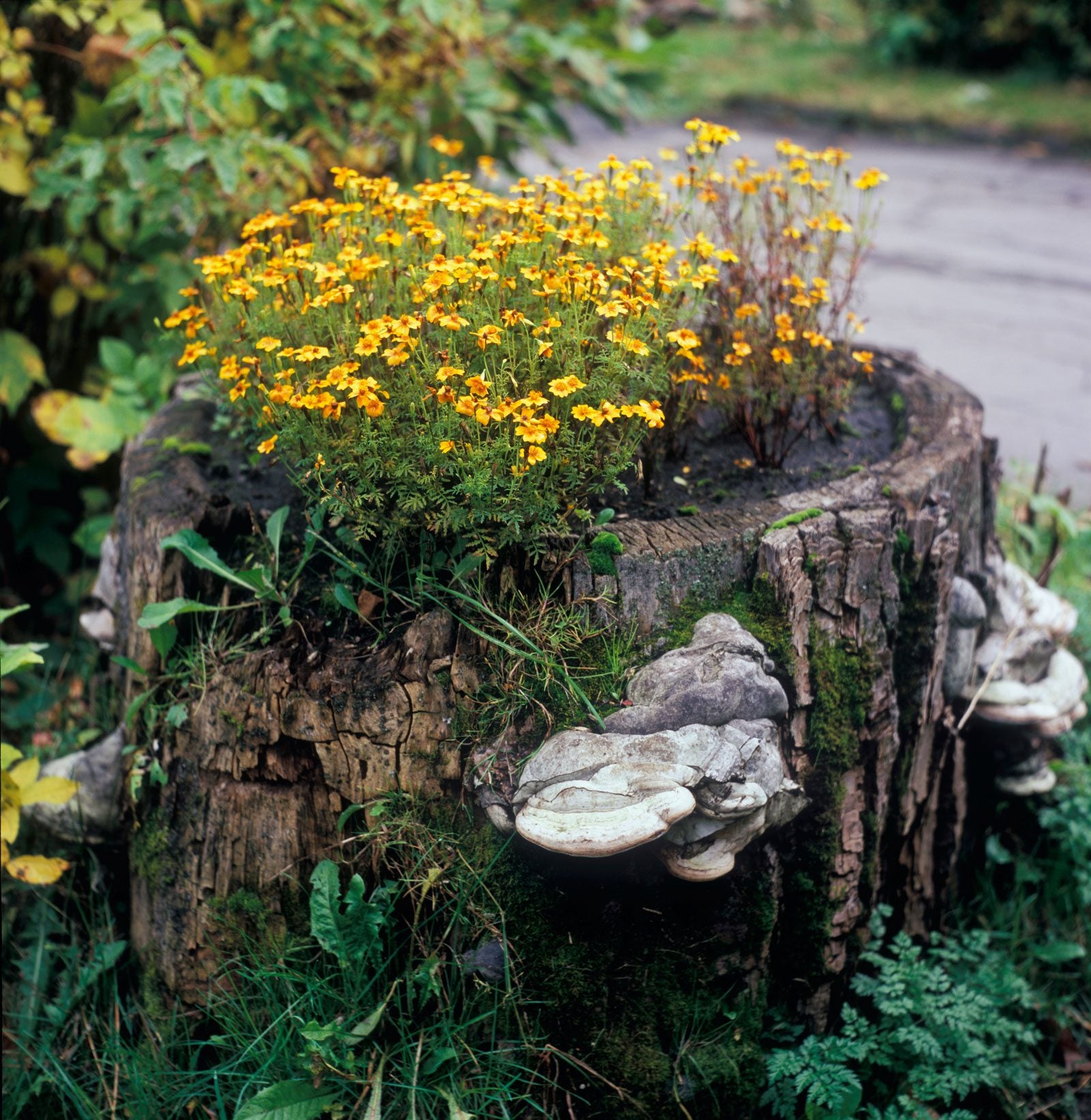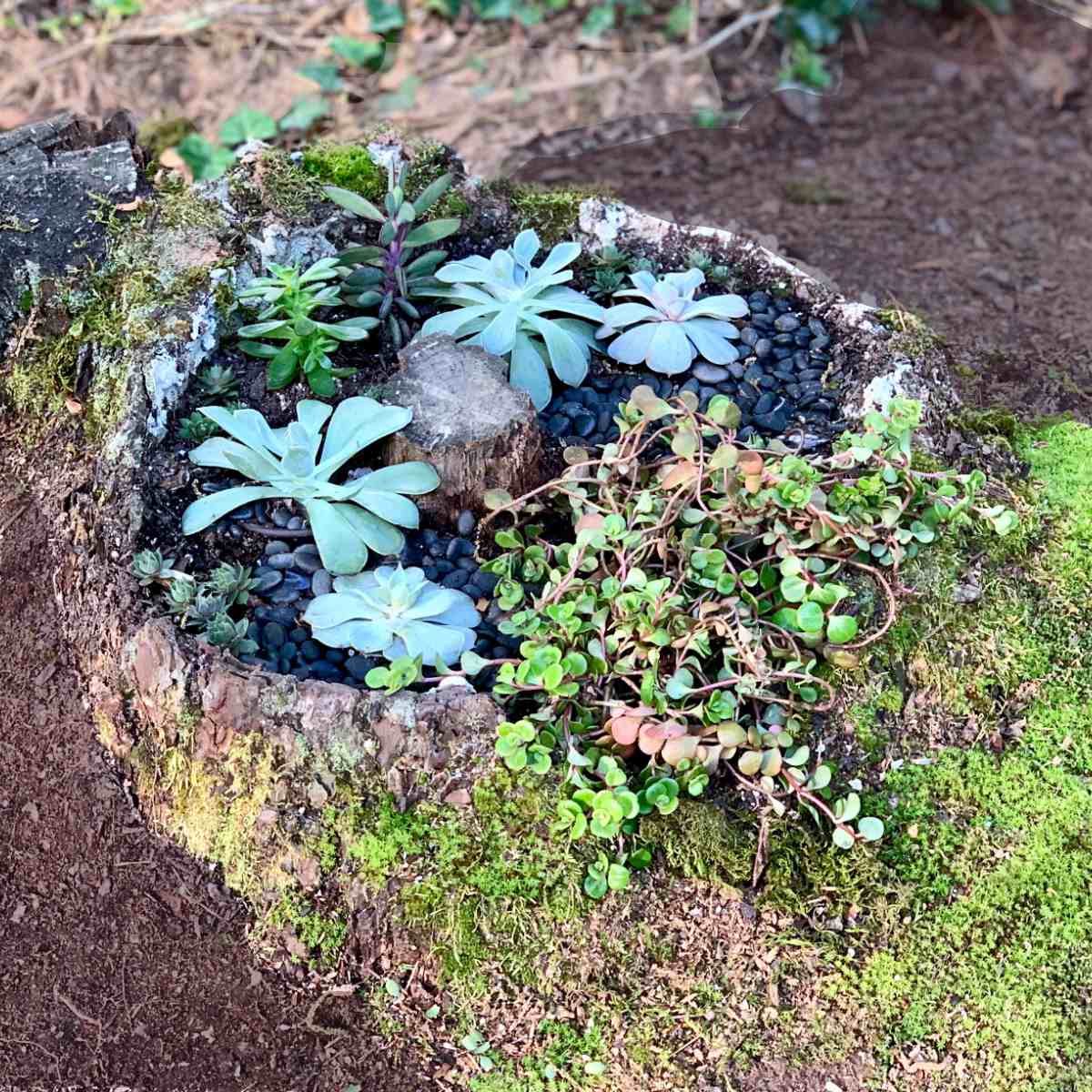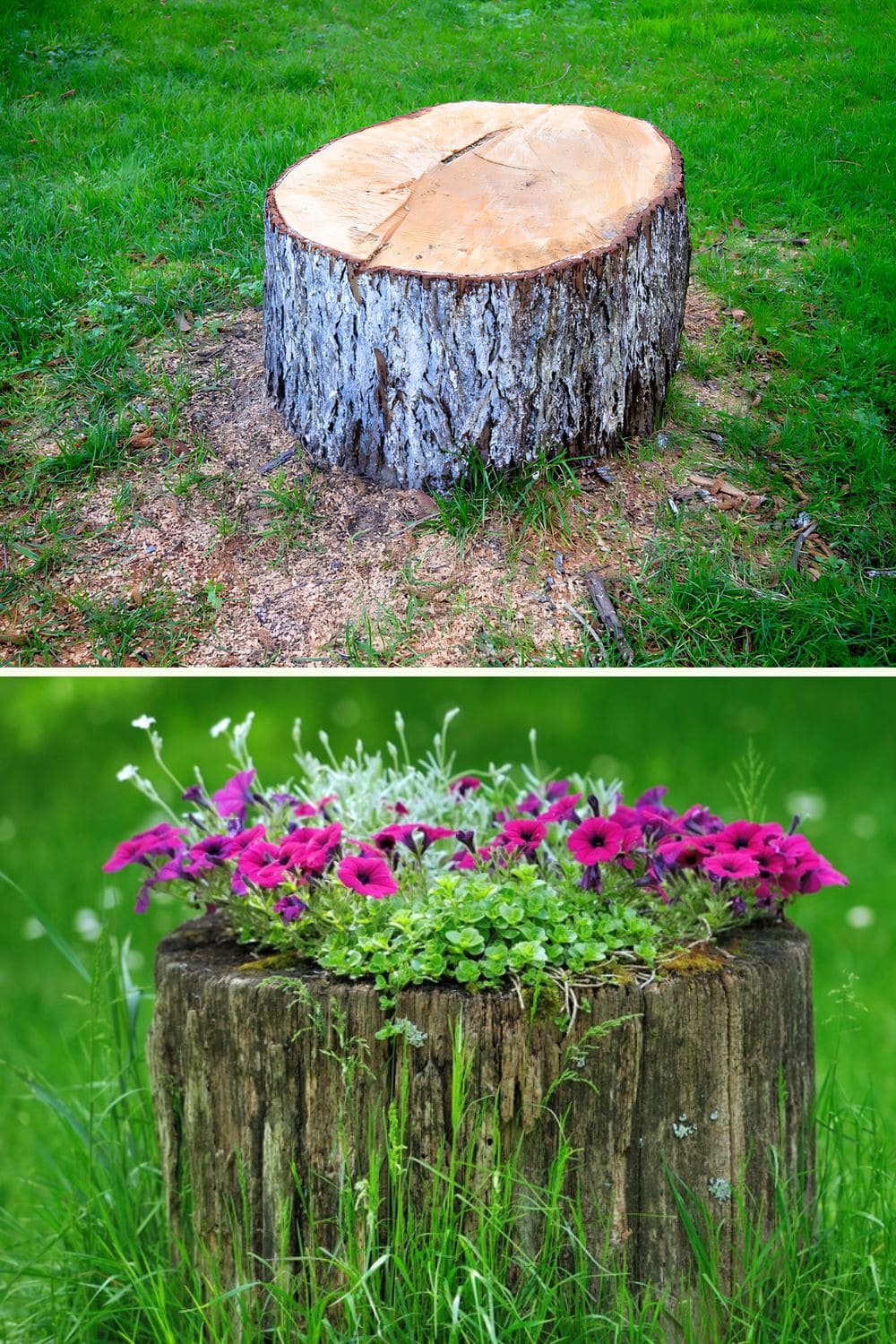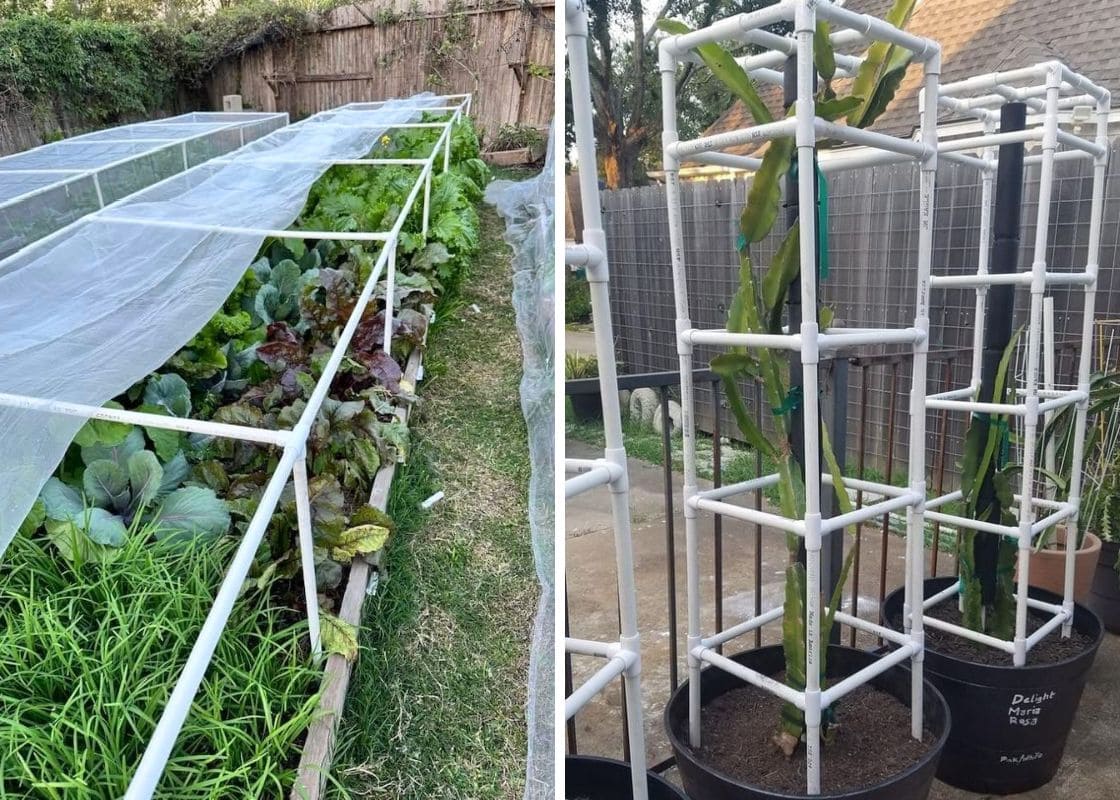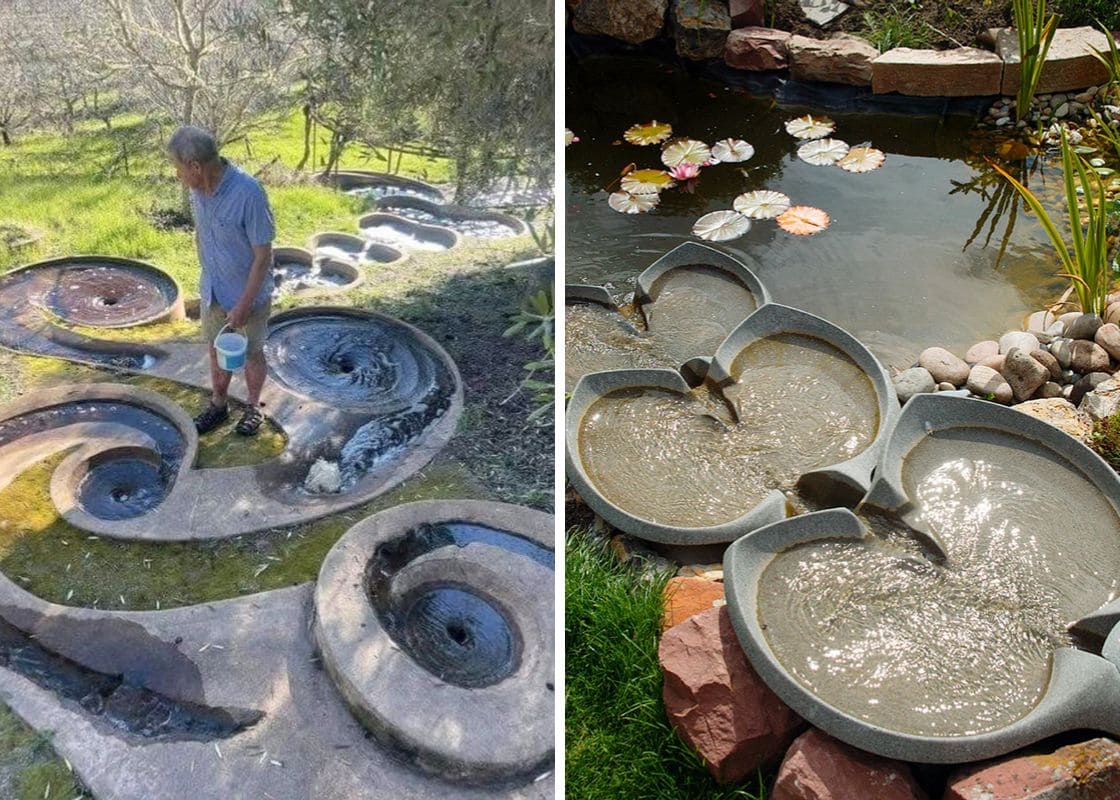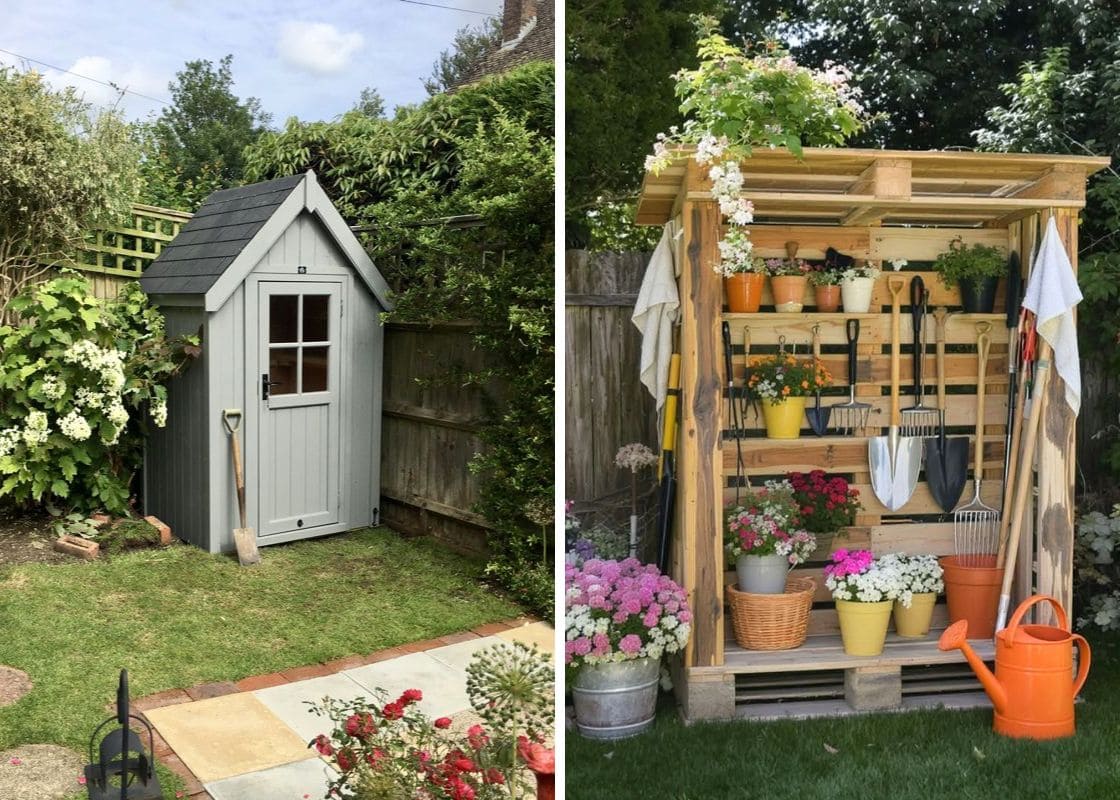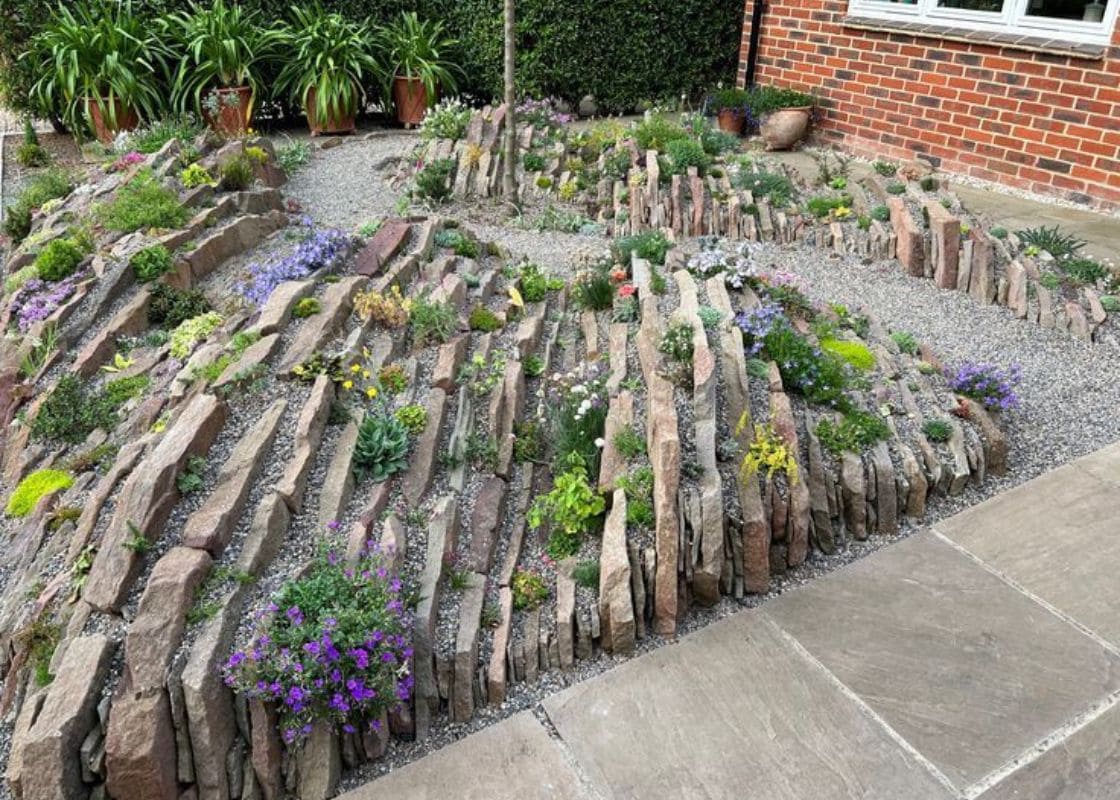If you have an old tree stump in your yard, don’t just see it as an eyesore – see it as potential.
I once had a stubborn stump that I couldn’t remove, but instead of letting it decay, I decided to transform it into something beautiful.
With some effort, I turned that once-forgotten stump into a stunning planter, adding character and charm to my garden.
Materials and Tools Needed
Here’s a bullet list of the materials you’ll need:
- Sturdy gloves
- Chainsaw
- Drill with a large bit
- Chisel and mallet
- Tape measure
- Safety goggles
- Ear protection (if have)
Step 1: Preparing the Stump

Let’s get that stump ready for transformation!
You can start by thoroughly cleaning it with a brush to remove any debris, then check for rot or decay, and if found, carefully cut it away with a knife or pruning shears.
Once the stump is clean and free of rot, you can consider sterilizing it using rubbing alcohol or a water-bleach mix to prevent infections.
Step 2: Level the Top of the Stump
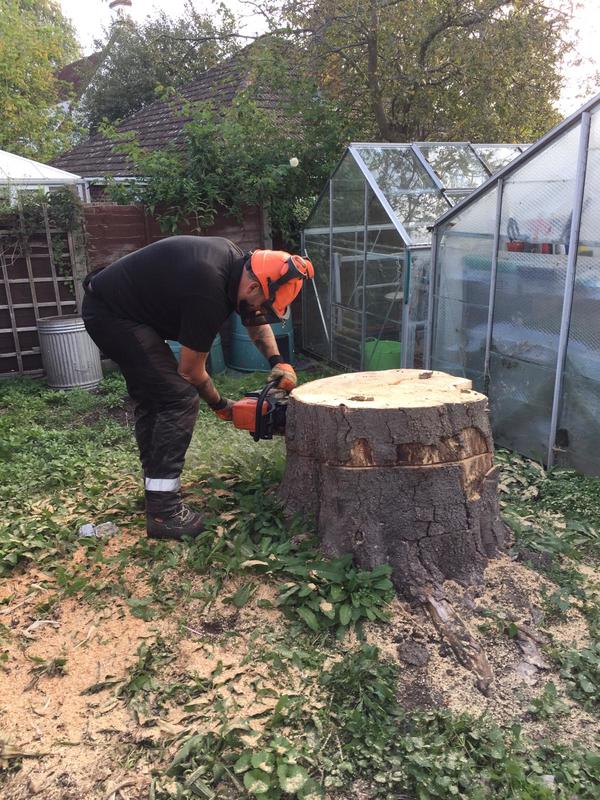
Now that the stump is prepped, it’s time to level the top. A flat surface makes hollowing easier and looks better.
You should use a sharp knife or chisel to shave off uneven bits, and if the stump is large, a chainsaw might be needed.
Next, take your time to remove small amounts to avoid overcutting.
Step 3: Hollowing the Stump
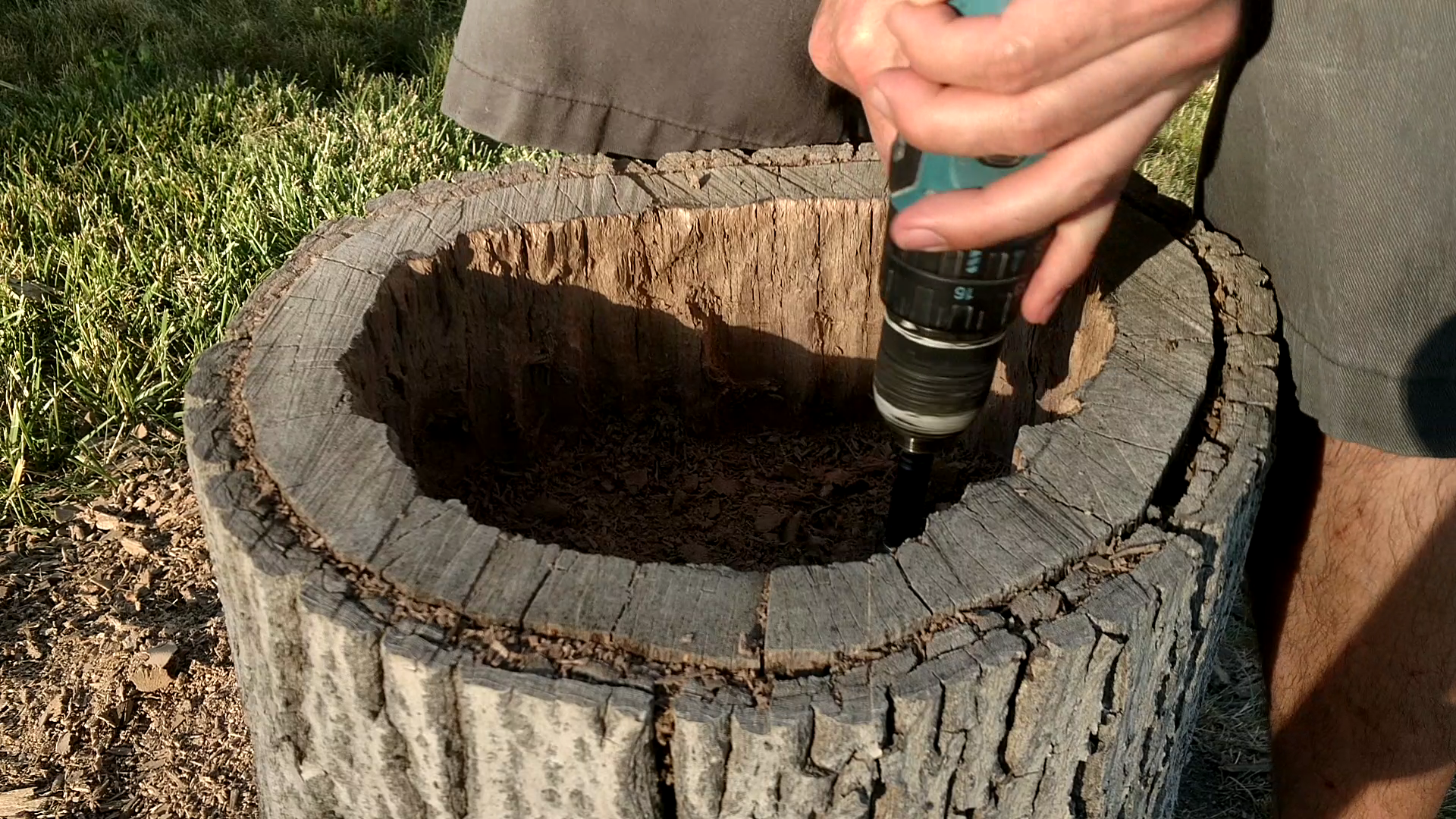
This is the fun part, grab your drill with a large bit, chisel, mallet, and safety goggles.
You several evenly spaced holes in the stump’s top; these guide your chiseling, then angle the chisel into a hole and strike it with the mallet, breaking away chunks of wood.
You should work around the stump, aiming for a depth of 6-8 inches, depending on your plants’ needs. It’s a bit of a workout, but seeing the progress makes it all worthwhile.
Step 4: Creating Drainage Holes
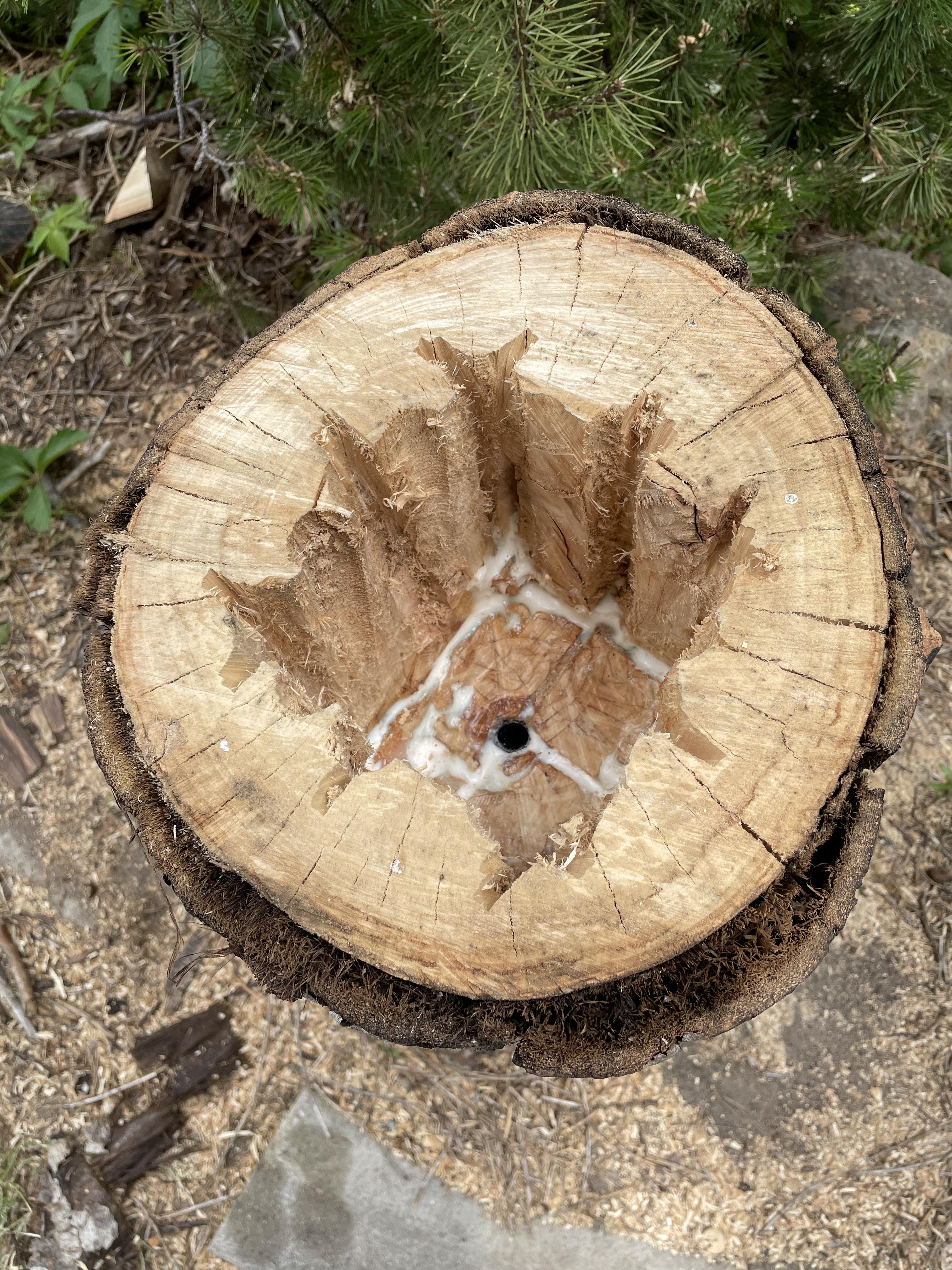
Without drainage system, roots can rot from excess water.
As a result, you should use a half-inch drill bit, make several holes in the bottom of the stump to allow water to escape.
For extra protection against weeds, place landscaping fabric at the bottom before adding soil. This fabric aids drainage and keeps weeds at bay.
Step 5: Planting Your Plants
Now you can opt for a well-draining potting mix and plants that will thrive in the stump’s conditions – sun-loving plants for sunny spots, or shade-tolerant ones for low light.
Then, you fill the hollowed stump with soil, leaving some space at the top, then gently place your plants, ensuring their roots are covered.
Finally, water thoroughly, monitor moisture levels in the first few weeks and wait for flowers or fruits.
